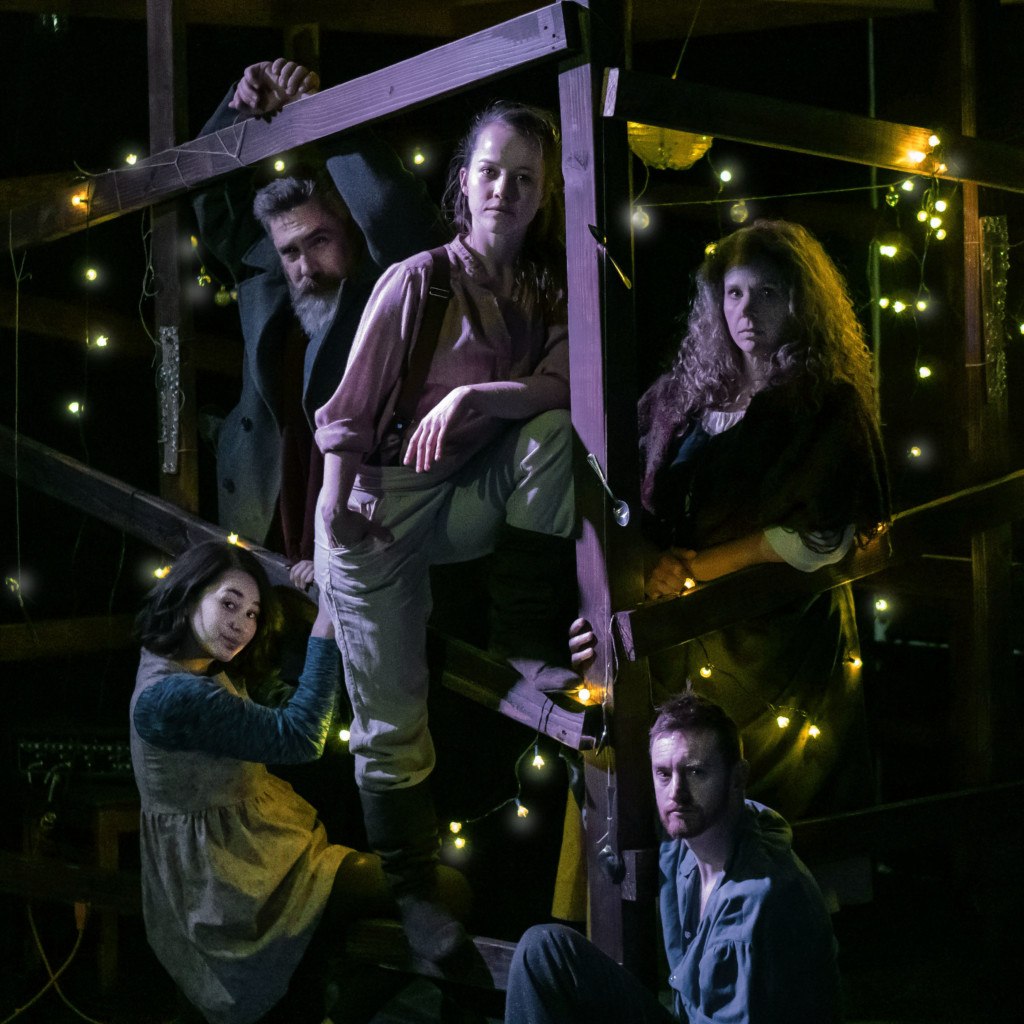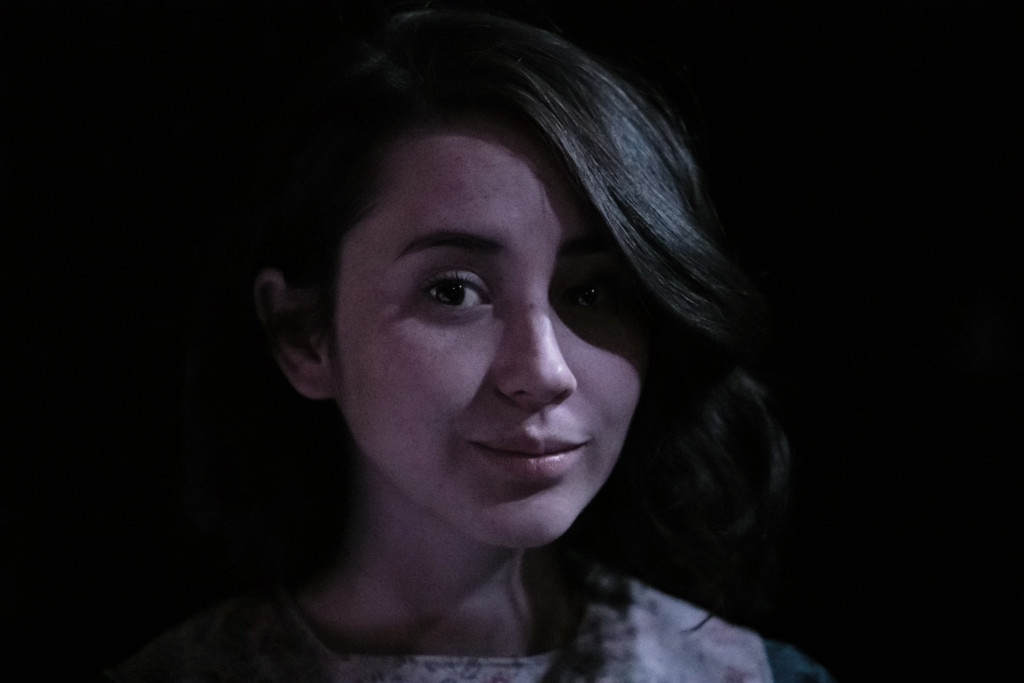For this holiday season, the wonderfully unconventional Sackerson theatrical company turns to the peculiar magic of The Distance of the Moon, one of the short stories that Italo Calvino wrote more than a half century ago as part of his unique Cosmicomics collection.
At its surface, this fantastical tale springs from the incidental scientific premise laid out in 1878 by George Howard Darwin (indeed, the son of the famous evolutionary biologist). The earth’s spin was so fast in its earliest stages that gravity from the sun pulled a chunk from the planet that eventually became our moon. A few years after Calvino’s story was published, the Apollo moon missions revealed both stunning differences and similarities between the moon and the Earth. “Apollo tied together for the first time the history of the moon with the history of the Earth,” said William Hartmann of the Planetary Science Institute in Tucson, Arizona. “It showed us that we live in a system, the Earth-moon system.”

But, the story about people who climb to the moon to harvest “moon milk” (as described in the play as “very thick, like a kind of cream cheese”) also bestows many gifts of thematic epiphanies. Underneath an enchanting, disarmingly innocent veneer of magic and fantasy, the story strikes at the elemental challenge of our humanity.
The core of the story is a love triangle. It poses significant questions. Can we overcome insensitivity and our compulsive urges to turn even our most intimate relationships into games of power and control? And, how do we achieve a healthy balance in our lives where the gravitational attractions of independence in a new environment and the familiarity of our home roots can exist together? Indeed, it is the ubiquitous expression of what we strive to experience in every holiday season. But, even in that formidable struggle, there can be opportune moments for humor, grace and love.

Sackerson’s adaptation, directed by Dave Mortensen, honors Calvino’s original text while it augments the story with new writing by playwright Morag Shepherd and dance movement choreographed by Breeanne Saxton, a member of the Ririe-Woodbury Dance Company. Performances will run each weekend (Fridays and Saturdays at 7 p.m.), beginning Nov. 23-24, and continuing through Dec. 21-22, along with matinee performances at 3 p.m. on Dec. 9, 15, 16 and 22. All performances will take place at the Wasatch Theatre Company at 124 South and 400 West in the south end of the Gateway.
“I’ve been following the story for years and I’ve always wanted to bring it to stage,” Mortensen says. One of the most popular renderings of Calvino’s story was a fine interpretation in stop-motion, cutout animation, accompanied by music from French composer Erik Satie and recited in Hebrew with English subtitles. The audio accompaniment, which includes a brief explanation about the scientific premise for the story, was provided by Liev Schreiber, recorded at a live Radiolab event.

Sackerson’s production uses Calvino’s original language from the English translation produced by William Weaver, which won the National Book Award for Translation in 1969. Shepherd added about 30 minutes of material that delves deeply into the time on the moon with the characters of Qfwfq (pronounced KIHF-wihfk or k-FWIFF-ih-kuh) and the wife of Captain Vhd Vhd (pronounced (VID-vid). This period of a month is not explored in the story. Thus, the play, as Mortensen explains, is “one-third Calvino, one-third Shepherd and one-third dance movement with music.”
Appropriately, the story is unbound by the demands of time. Qfwfq is a mysterious sort – the omnipresent narrator in all of Calvino’s science fiction short stories who takes on various forms. Her cousin (“the deaf one”) is a skilled jumper who is very good at harvesting the moon milk. In the play, we get a comprehensive description of this strange food, which could aspire to the exhilarating sensation of umami but also requires one to be adventurous to try something so exotic and disgusting at first glance.

Xlthlx (pronounced (ZIHL-thuh-licks OR ICK-sul-thlicks) is ebullient and whimsical, a young woman who is caught in the moon’s gravity and then consumes sea creatures so she can eventually fall back to Earth. Captain Vhd Vhd, who is experienced with exploring the moon, seems eager to see his wife off to explore on her own.
To get to the moon, one must jump from a ladder platform on a boat in the middle of the sea. In Calvino’s story, the moon is very close to the Earth so a jump of a few yards is convincing. Hence, in the set design, a 10-foot platform serves as the focus of the original choreography, conceived by Saxton. In one scene, The Deaf One has a “harvesting moon milk” dance, while Xlthlx watches. In another, Xlthlx interacts with the creatures swimming by the boat and when she jumps off the boat, the moon’s gravitational pull takes her away, even as others try unsuccessfully to pull her back. Of course, she finally settles back into the boat once she has eaten enough creatures to boost her weight and defy the moon’s gravity.

Eventually, only Qfwfq and the Captain’s Wife are alone on the moon, which constitutes the new material Shepherd has written for the adaptation. In the adaptation, gender is not specified and in this production, both Qfwfq and The Captain’s Wife are played by women. In the long one act scene Two on the Moon, the expectations and anticipation of the unfamiliar, unprecedented opportunity are met by pervasive, strengthened second thoughts and disappointment. Qfwfq tells The Captain’s Wife, “There’s something about you. It’s one thing, and then it’s another, and they’re all mixed in together. I just want to be close to you.” Meanwhile, as the Earth moves farther away, Qfwfq wonders if her desires will ever be reciprocated.
Indeed, Sackerson, given its well cultivated sense for experimental adaptations, appears especially well suited to play up the unique characteristics of this Calvino tale. The original story is replete with poetic images – violet-colored fish and the moon’s underbelly appearing as if it would be smoked salmon. The funky character of “moon milk” is “formed in the crevices between one scale and the next, through the fermentation of various bodies and substances.” It is, as Dani Cavallaro, a scholar who has studied Calvino’s oeuvre extensively, says, a satire of the moon’s traditionally romanticized representations and of the human’s delirious self-image of a vainglorious being. It is a potent reminder for a season that originally was conceived in the humility and grace of our collective vulnerability.

The cast includes Jahnavi Alyssa as Qfwfq, Mark Fossen as Captain Vhd Vhd, Elizabeth Golden as The Captain’s Wife, Graham Brown as The Deaf One and Samantha Matsukawa as Xlthlx. Music includes sound design by Shawn Francis Saunders. Rounding out the production crew are Madeline Ashton (scenic design), Jessica Rubin (costume design) and Miranda Giles (stage management).
For tickets and more information, see the Sackerson web page.

